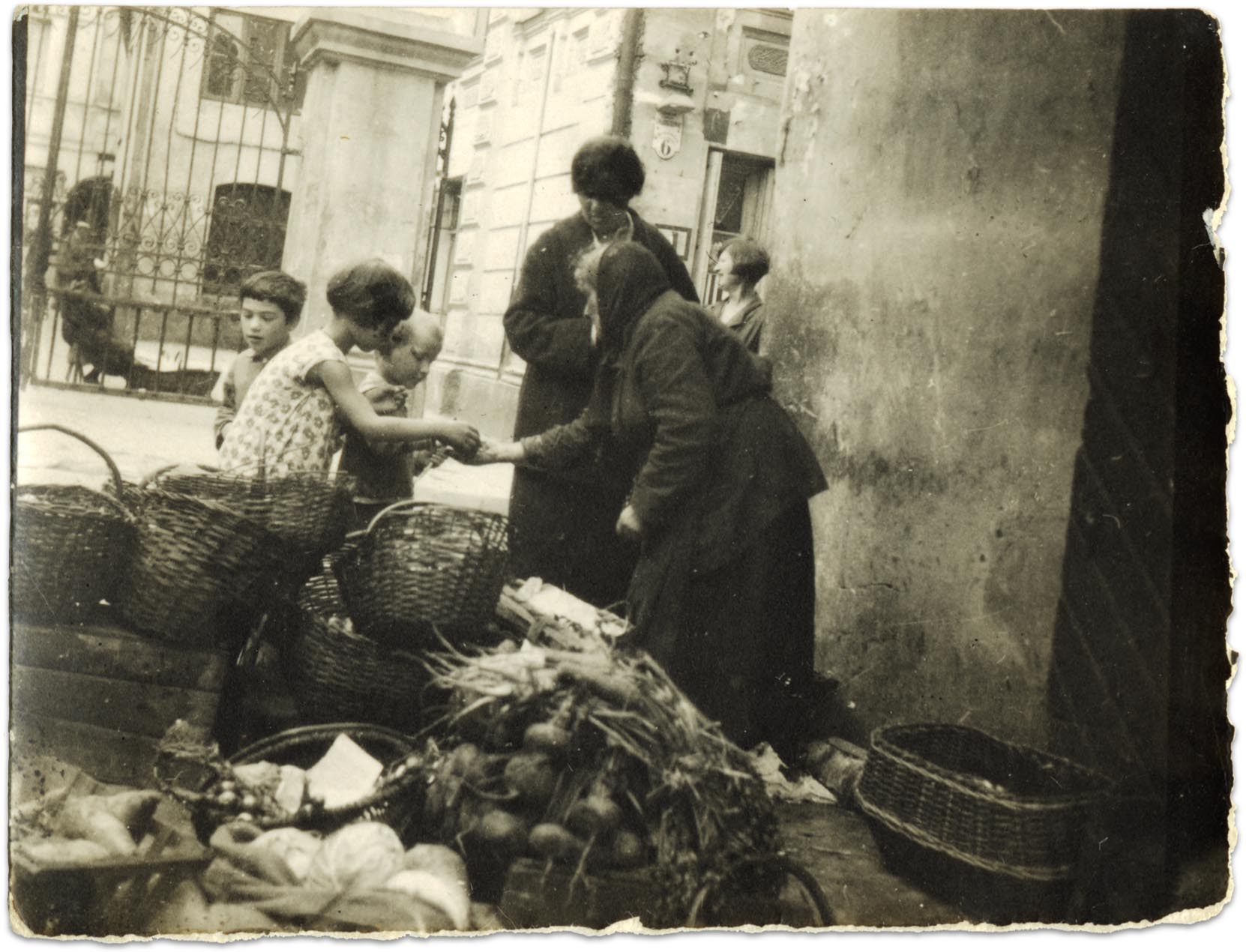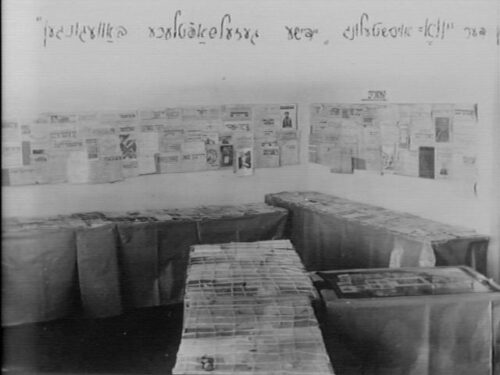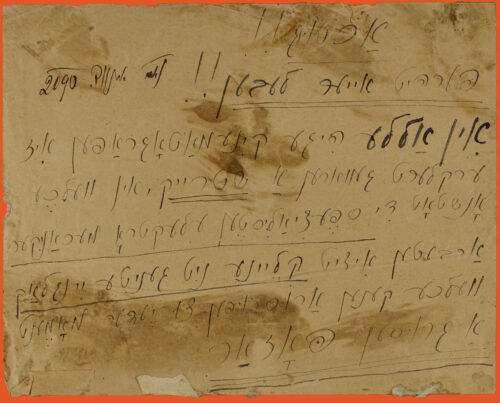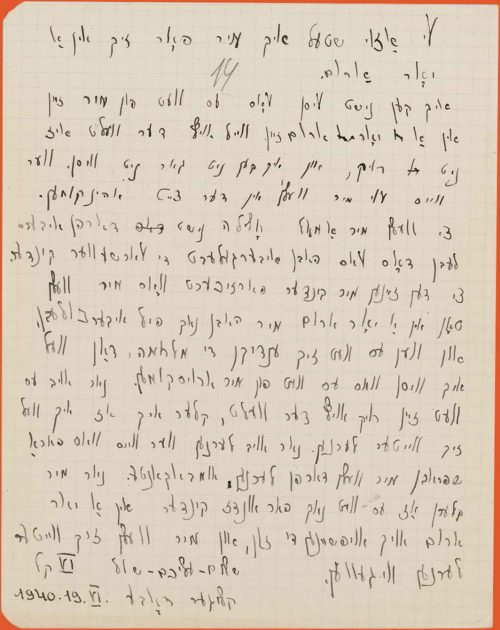Yitskhok Rudashevski
Before the mass murder of the Jews of Europe, each victim was a real person; afterward, they became numbers. Before the war, they had hopes, dreams, and vibrant lives; many did their best to maintain their aspirations during the war, too. Sometimes, individuals were able to document their experiences—even under deadly circumstances. One such person was Yitskhok Rudashevski, a teenager in Vilna, Poland, with a talent for writing and a passion for the politics and cultural life of his city. He left behind a diary that chronicles what was happening around him. Before getting to the diary itself, let’s learn about his early life. This chapter contains four parts.
Part 1: The city

On a cold winter day in December 1927, Yitskhok Rudashevski was born in Vilna, Poland. His father was a typesetter for the Vilner Tog, the Jewish daily paper. And his mother was a seamstress. Together, they lived in a modest flat.
Rudashevski grew up as an only child, but was surrounded by a close extended family—including his grandmother, aunts, uncles, and cousins—in the lively Jewish community of Vilna. Although Vilna was considered part of Poland at the time of his birth, claim to the land was frequently disputed, and ownership had changed hands between Germany, Lithuania, Russia, and Poland multiple times in the decades before Rudashevski was born.
Despite its changing borders, Vilna consistently had a large Jewish population over centuries that featured a diverse secular as well as religious Jewish culture. This earned Vilna the title of "the Jerusalem of Lithuania." Yitskhok Rudashevski's family was Jewish, but not particularly religious. During his childhood, non-religious Jewish culture thrived. He proudly wrote, spoke, and read in Yiddish, a language that Jews in Eastern Europe had spoken for centuries. Rudashevski attended a secular Jewish school, and his community hosted a great many cultural events—even on Fridays and Saturdays, when very religious Jews were unable to attend.

Kultur-lige (Culture League) Kreyngel’s Auditorium, Saturday, September 27th, 3 pm, the Kultur-lige (Culture League) in Kreyngel’s Auditorium, at 4 Preobrazhensky St., presents a lecture by I. Gordin from Warsaw – recently arrived from America – on the topic of “Jewish Cultural Life in America.” Tickets at 50 kopecks to 3 rubles on Saturday at the auditorium box office from 11 am onward.
This is a Yiddish poster advertising a lecture in Vilna, titled "Jewish Cultural Life in the United States," to be held on a Saturday afternoon, during the religious day of rest. Jewish secular culture, though separate from Judaism as a religion (or Jewish religious practice), often made use of religious imagery and symbolism. For secular Jews like Yitskhok Rudashevski, this culture was both a way of life and an academic discipline.
Many cultural celebrities could be found in the Jewish world. This is the program of a famous Yiddish production of Shakespeare’s The Tempest in 1939. It featured prominent Yiddish actors, and its dramaturg was a famous Polish non-Jewish director, Leon Schiller. Vilna featured many such performances. Vilna is also home to the beloved YIVO Institute for Jewish Research, founded in 1925. YIVO conducts important research on the Yiddish language, Jewish history, and Jewish demographics.

Plenty of Jews in Vilna were religious; Yitskhok Rudashevski was just not one of them. However, his family still considered itself culturally Jewish.
The days of young people are similar, and Rudashevski’s were no different. After waking up in the morning, he would have breakfast. The most common food eaten in the mornings were a bowl of hot cereal or a piece of bread with something on it like honey or jam.


Before leaving for school, Yitskhok Rudashevski would say goodbye to his mother, father, and grandmother. He would walk to school, sometimes with his cousin Sore. The streets of Vilna were filled with the laughter of schoolchildren, the trotting of horses, and the voices of sellers at open air markets advertising their wares.



























